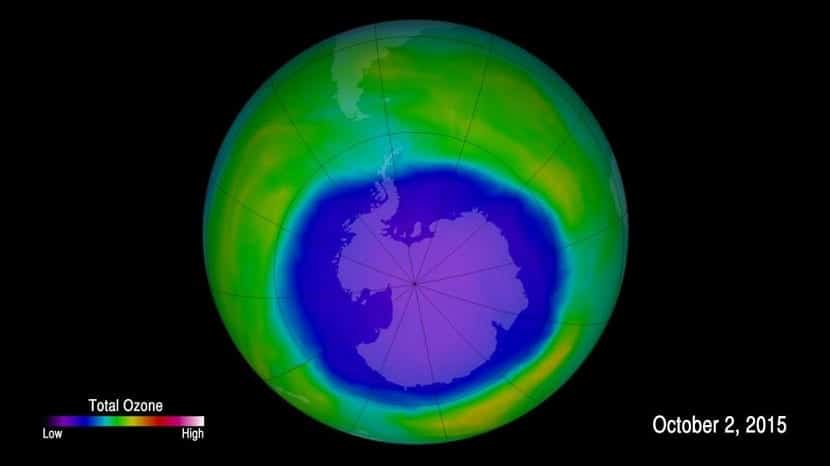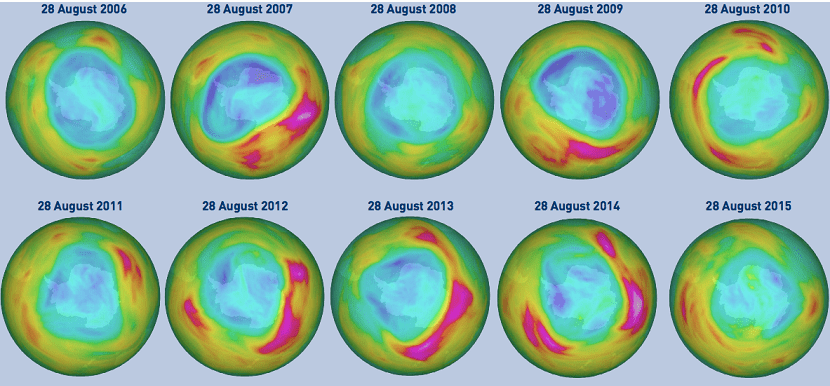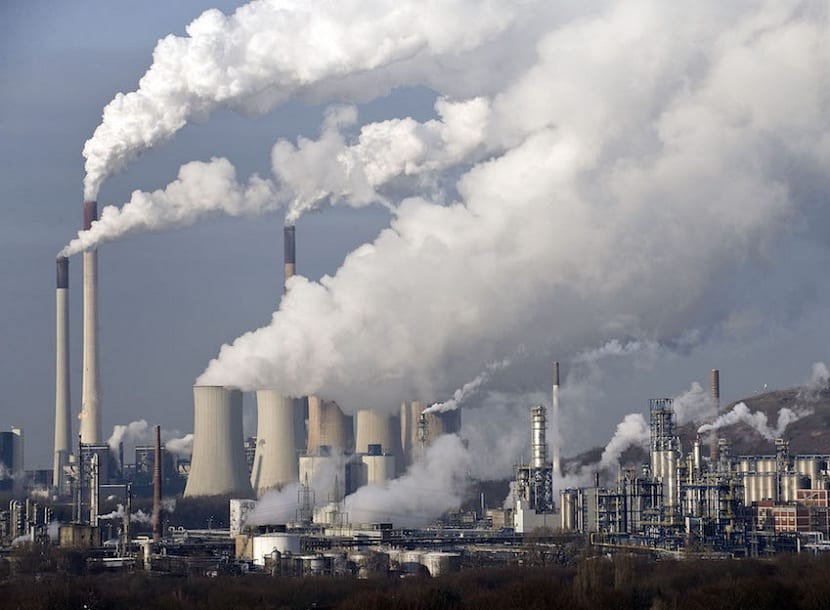
The hole in the ozone layer is almost worldwide known. Greenhouse gases called chlorofluorocarbons (CFCs) have lowered the concentration of ozone in the Antarctic area. In 1992 it was established the Montreal Protocol by which the emissions of these gases were prohibited.
To date, the hole in the ozone layer has been stopped for the first time worldwide and is even showing signs of recovery, thanks to this elimination of emissions of these gases that destroy it. How is the ozone outlook in our stratosphere?
Ozone hole reduction

This data represents a complete success when it comes to taking into account the state of the ozone layer worldwide. Thanks to near the 99% of ozone depleting substances have stopped being emitted into the atmosphere, the hole in the ozone layer is recovering. If this had not occurred - it has continued - the increase in the levels of ultraviolet rays, caused by the destruction of the ozone layer, would have been incompatible with life.
Although this is good news, it's still not safe to let your guard down and continue working on atmospheric models that help with the stability of the ozone layer.
Global warming effects

Global warming has generated an increase in temperature on the planet's surface (troposphere), but it has also led to a cooling in the upper layers of the atmosphere (stratosphere), which translates into a very strong acceleration of the hot air current from the equator towards the poles.
Thanks to the increase in this air flow, more oxygen is injected into the upper layers of the atmosphere, which is finally transformed into ozone. Hence the ozone production is higher. Therefore, the evolution of the ozone layer will depend on the dynamics of the atmosphere when we reduce global warming with the Paris Agreement.
The climate scenario forecast for the middle of this century is a "thinning" of the layer in equatorial zones and a thickening than there were previously in medium and high latitudes, which would fully affect the European continent, with special incidence in the Nordic countries.
Since greenhouse gases cause alterations in ozone chemistry, emissions of hydrofluorocarbons (HFCs) used in refrigerators and air conditioners must be prevented.